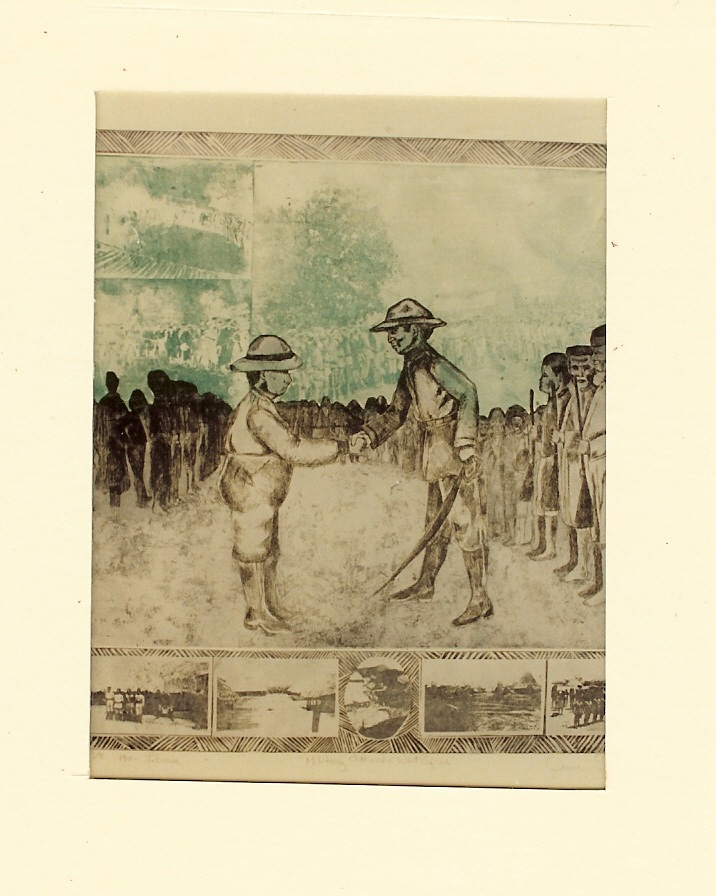
West Africa

|
This (22"x30") etching contains rare photos taken by Charles Young in Africa near the turn-of-the-century. These photographs are unique from the standpoint that they were photos of Africans taken from the perspective of an African American. There were few American blacks returning to Africa at that time, so the pride that Charles Young had for his people of the black race was clearly reflected in his photographs. Marvin Fletcher made reference to Charles Young's experience in Africa in his book, The Negro Soldier and the United States Army: "After two years of duty, he (referring to Benjamin O. Davis) was replaced by Young who brought with him three young men of his own choosing to organize and equip the Liberian Army. Among these men was Wilson Ballard, a dentist and former officer under Major Young in the 9th Ohio Volunteer Infantry in the Spanish-American War. Ballard was made a Major in the Liberian Defense Force and stayed in that capacity for five years before returning to the United States to resume his former career. Young and his associates organized a native supply force of 1,200 men and instituted a new system of drill, finance, supply and regulations: assisted in the training of the men; aided in the pacification of Liberians; and built roads from the coast through jungle to the border areas in dispute. All of this was, said Young, "an arduous but pleasant task, because it was worth while and because it was in line of development of my own people of the black race." In his own book, Military Morale of Nations and Races, published in 1912, Young made the following statement in his dialogue on Africa: "If these African peoples are wise, they will neglect none of these external resources, looking always toward a future wherein will be accomplished the rehabilitation of the African race as of old. Then will return this continent its ancient glories of progress and civilization, as chronicled by Herodotus and as left in its temples and pyramids."
While Young was stationed in Liberia, there were many events at home in the U.S. that the African American community found disturbing. For example, even though there was an observance of the 50th anniversary of the signing of the Emancipation Proclamation in 1913, reality concerning the lack of progress in race relations was fully understood by African Americans, for that same year President Wilson implemented government-wide federal segregation of all work places, rest rooms, and lunch rooms.
Young was very aware of the adverse racial climate within the country because during 1912 and 1913 there were over one hundred reported lynchings of black Americans, and the next year in 1914, the same year that the "Great War"...World War I began in Europe, there were fifty-one know murders of black Americans by lynching. These and all the other previously mentioned lynchings were hate crimes that often went unpunished. As a rule, justice was unheard of for the affected families of these malicious crimes, crimes that were referred to by the NAACP as the "shame of the country." Meanwhile, Young was taking a leading role in the war against racial violence by encouraging the soldiers of the 10th Cavalry to contribute to the NAACP's anti-lynching fund.
| |
-------- Copyright © 2007 by Joann Helene Sanneh All Rights Reserved --------------------------------------------------------------------------------------------------------------------------------------------------------------------------------------------------------------
--------------------------------------------------------------------------------------------------------------------------------------------------------------------------------------------------------------![]()
